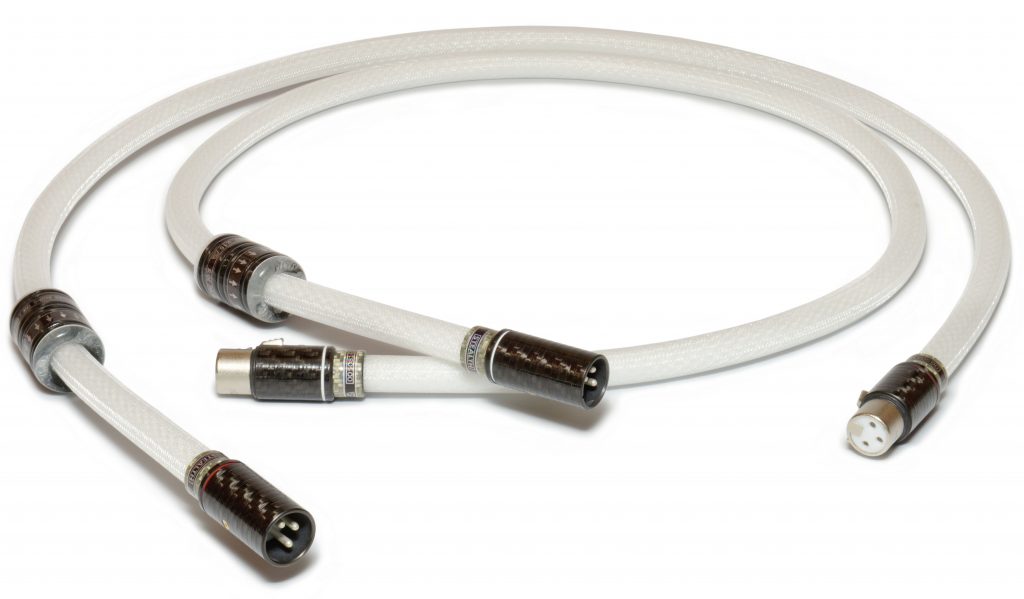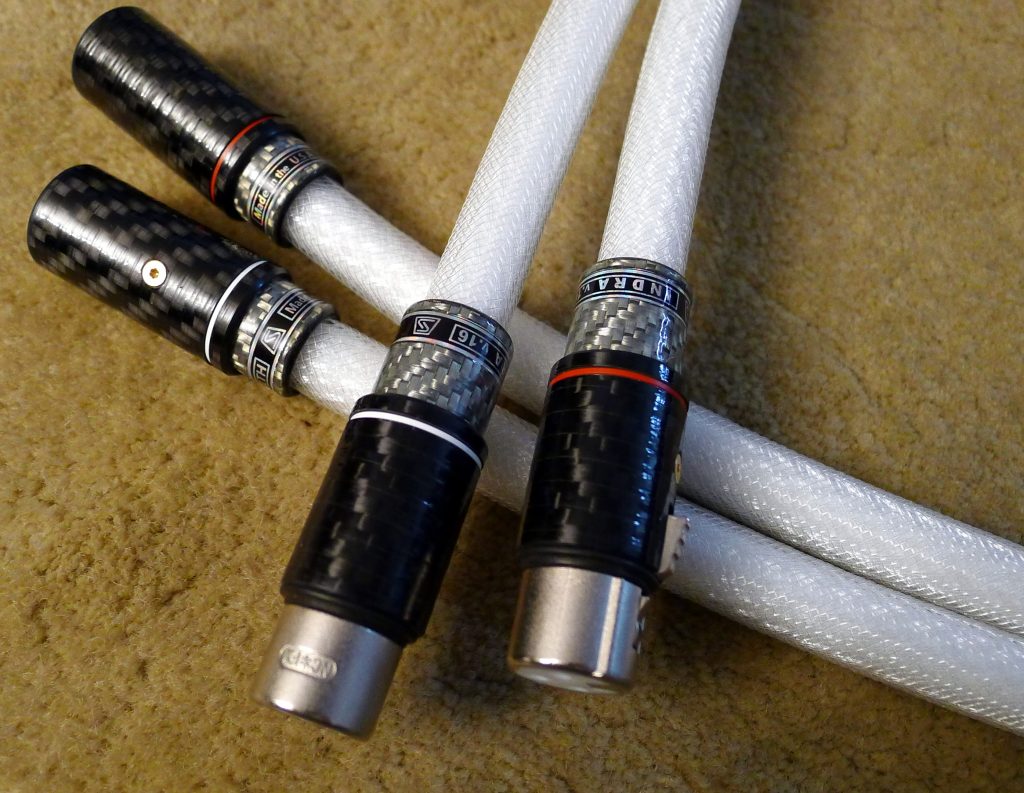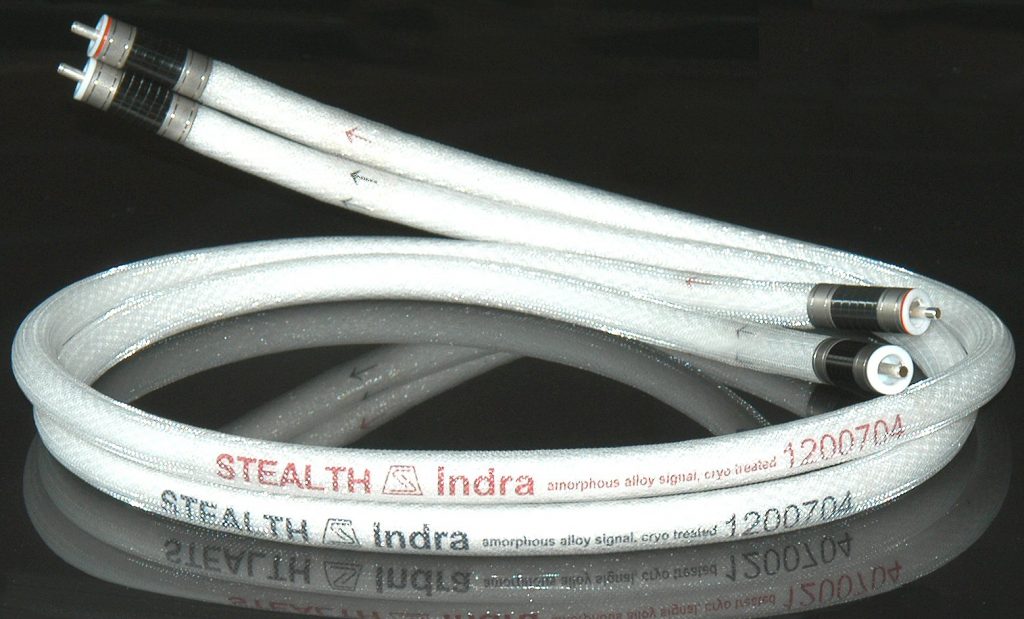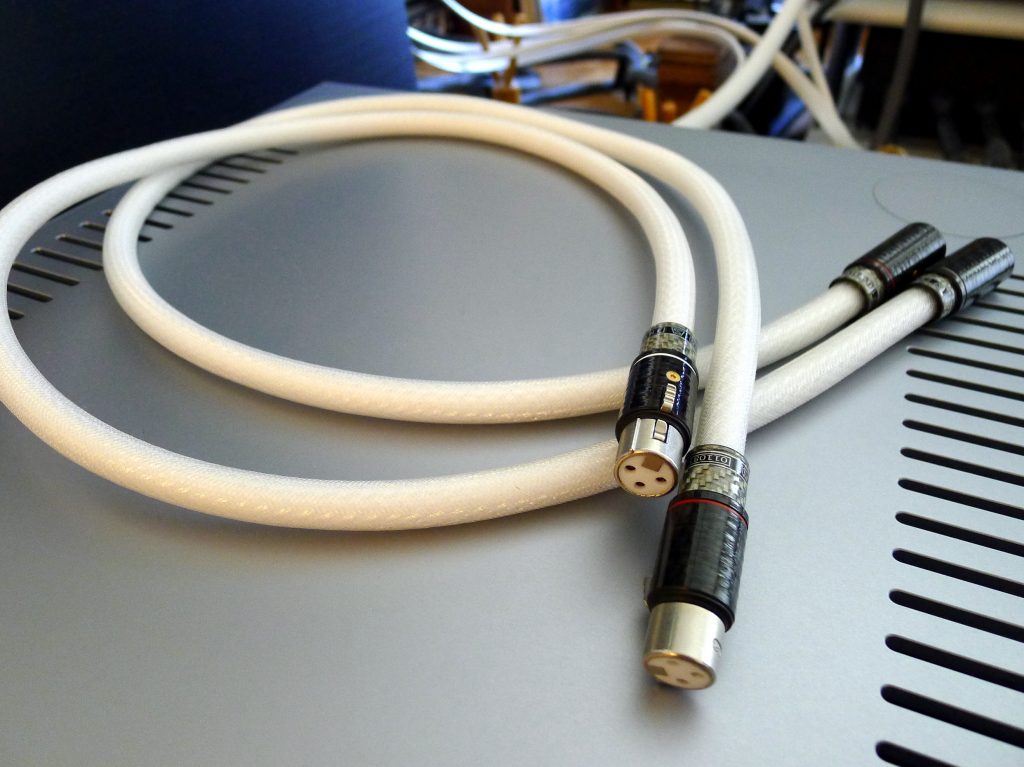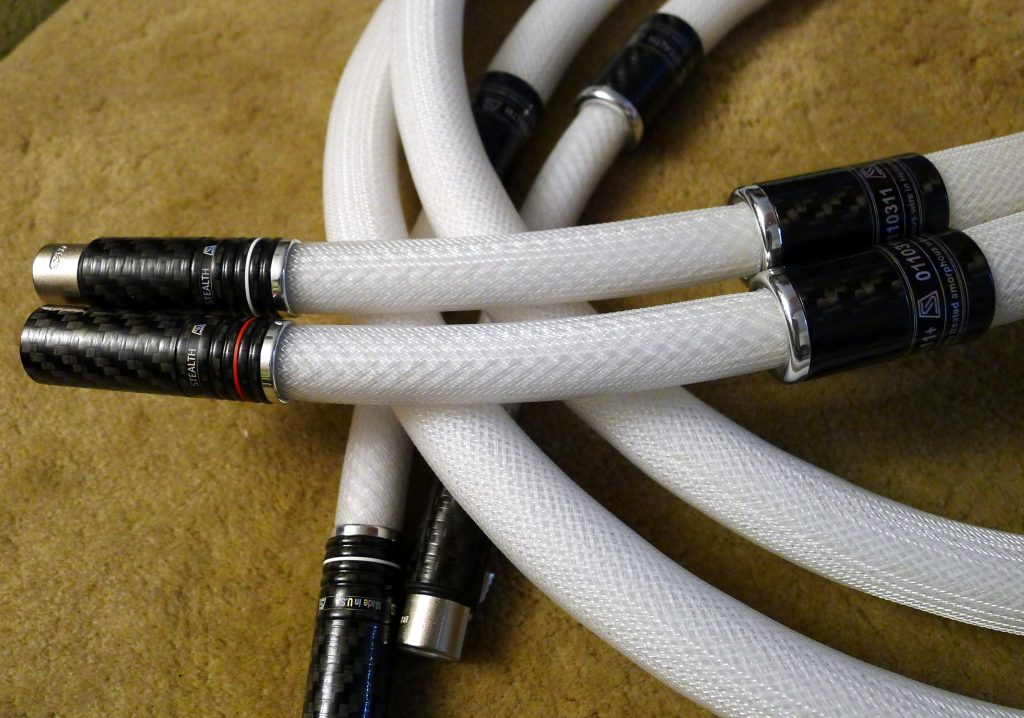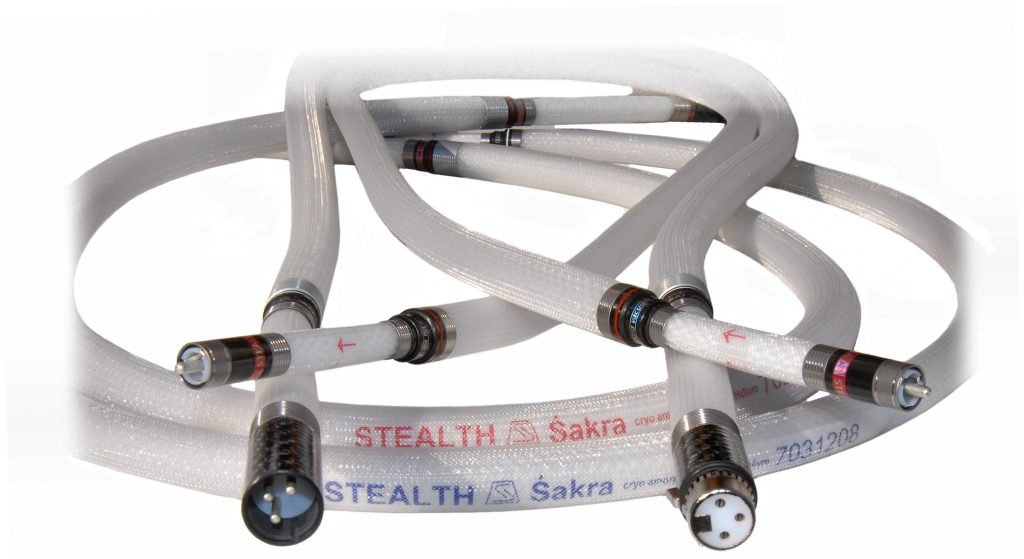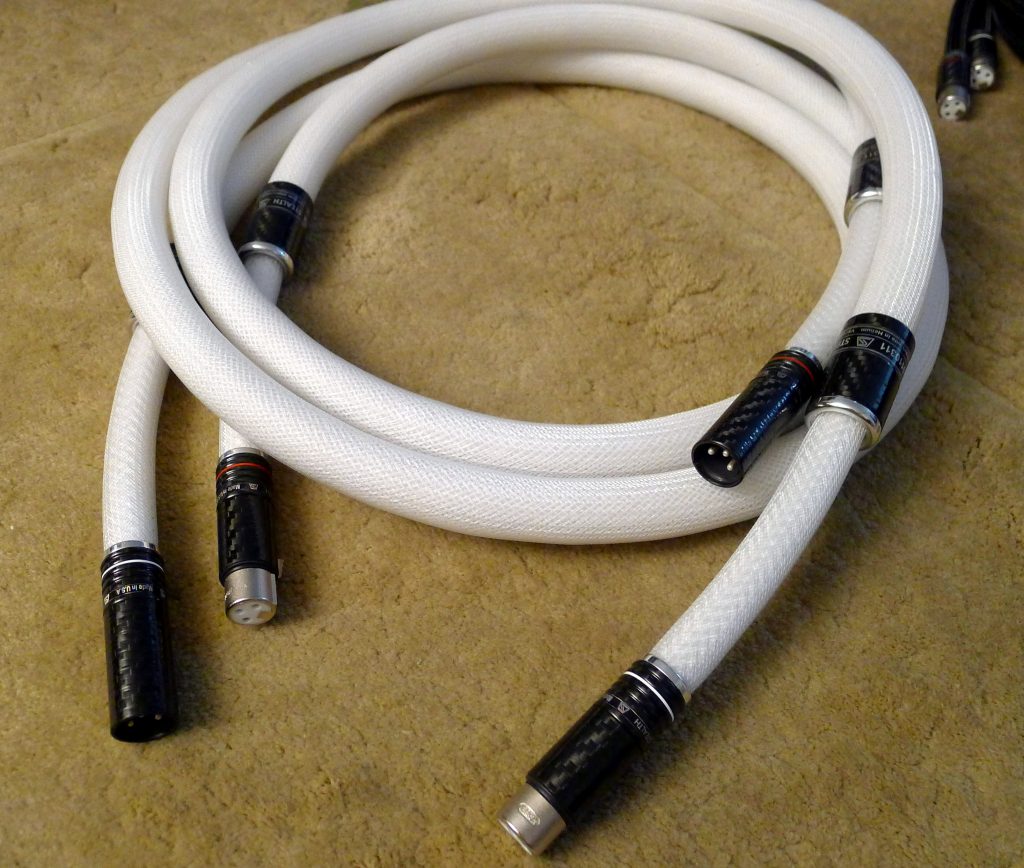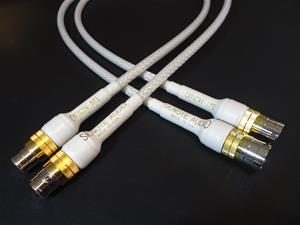Indra Redux
Back in the Precambrian Era of audio (circa 2003), STEALTH Audio introduced an interconnect that disrupted the cable industry. The Indra had many ground-breaking features, not least its MSRP of $5750/meter, a startling number at the time. (Little did we know what was to come on that front.)
But one element in particular catapulted the wire out of the quotidian into the realm of sci-fi. The conductors were said to be made of a mysterious amorphous media developed by the Russian aerospace industry at frightful expense, and rumored to be in limited supply. Serguei Timechev, the STEALTH designer, bought up the remaining stock, which he estimated was enough to make about 400 pairs of one meter interconnects.
Accolades for the Indra quickly rolled in from every magazine, notably The Absolute Sound, multiple reviews from Six Moons, and extensive coverage in Positive Feedback.
Greg Weaver enthused:
"It is so invisible, so natural, and so transparent, as to still be beyond my ability to describe accurately….Instruments had a more natural existence, both on their own and in their association with other instruments."
Jim Merod waxed poetic:
"…Serguei Timachev's top-of-the-line Indra cables own sonic virtues I've never encountered in any other cable….Indra cables disappear….They are utterly silent accomplices to a recording engineer's work."
And I contributed:
"Returning to a pair of my reference cables, I'm saddened to note the coarseness and noise riding on the signal, the treble deterioration in crescendos, the general lack of finesse and polish, and the inescapable credibility gap."
Today's Indra
Fifteen years later the Indra V16 is in the STEALTH inventory. (Yes, that many iterations of improvements have been applied. You can view the revision history HERE.) In the meantime, the MSRP has kept pace: $7000/1m RCA or $9300/1m XLR.
Indra circa 2005
Mention STEALTH and invariably the question comes up, "What about the strictly limited supply?" I asked Serguei about it:
As I have stated many times, I bought the entire supply of that wire from Russian aerospace. All my attempts to order similar wire from any source have not been successful thus far.
I never knew exactly how much wire I have. All of the spools are multi-layer and of unmarked quantity; some are full, some are partially empty.
But the most important factor is that over the years we learned how to reduce waste. The wire is very thin, about 50 or 52 AWG. It is obvious that making reliable cables of such thin wire is very tricky. In the beginning the waste was tremendous. A lot of partially completed cables with broken wire are still sitting in our storage. We keep it just in case we run out of our supply of spooled wire.
As of today, I can say that we are approximately half-way through. In other words, we still have the wire for years to come.
This is very important because not just the Indra but all of STEALTH's top-line ICs use this conductor material.
The audio landscape has changed considerably since then. Certainly my system is in another place. How would the star of 2004 hold up today? I burned-in the Indra for a week before inserting a single length between my CH Precision C1 DAC and L1 Preamp.
I'm not sure why I bought this SACD. I already own several satisfying versions of the Prokofiev Sonata in D Major for flute and piano, including the old Stereophile LP from 1989 recorded by Kavi Alexander (remember Water Lily Acoustics?), and produced by the Stereophile team on heavy-weight vinyl.
Certainly the artists on Bezaly - Ashkenazy (BIS 2259) lured me: Vladimir Ashkenazy, an aging luminary of the keyboard and podium, still vital in his sunset years; and Sharon Bezaly, a rising young flautist becoming a dominant presence on her instrument. I must admit it was also the label. BIS produces some of the finest recordings extant. Two major artists in audiophile-quality sound—might this prove to be the definitive rendition of this lovely work?
I chose the Bezaly - Ashkenazy to compare the STEALTH Indra with my current fave interconnects from CH Precision. By coincidence, these two happen to have similar MSRPs (CH Reference is $9800/1m).
Hmm. Based on the radically different concept and design, I expected radically different sonics, but it wasn't so. The Indra pulled up right alongside the CH Ref in terms of tonal balance, timbre, dynamics, and resolution. From a birds' eye point of view the sonics of these cables were more alike than different. I was caught off guard.
The Third Man In
Zooming in for the worm's point of view the difference was exposed. The Indra brought out nuances and details that were previously borderline liminal. This was most obvious in the extra-musical details surrounding the flute. Bezaly's physical exertions (her breath technique, how she alters the air flowing across the mouthpiece) and the sounds of the instrument's mechanism (the frequent clacking of keys being depressed) were thrust into the foreground. There was no mistaking the effort she was putting out to make the instrument speak as she wanted. These cues aggregated to create the impression of a phantom third presence at the recording.
Nothing comparable came from the piano—just pure, clean notes as the ivories were depressed, no evidence of the human at work.
Jazz vs. Classical
In the classical genre, this is unusual, but it happens. Some musicians work very hard at their instruments; others make it seem effortless. At times I've heard it live, when seated up close in an intimate hall; it always takes me aback. As far as recordings, it's rare. On most commercial CDs it's deleted post-production. An audiophile label like BIS, on the other hand, might retain it; they know their customers love this kind of thing.
Just an FYI: Classical training teaches suppression of the mouth noises, but in the jazz world there is a technique called over-blowing where the flautist vocalizes along with the instrument. It is used to expand the range of sounds, like accompanying yourself in a duet.
How the Indra does it
The Indra has always been distinguished by a very modern sound; there is nothing vintage in its presentation. It has the virtues of ultra-low noise and a very black background, pinpoint soundstaging, great dynamics, flat frequency response, high purity, and zero artifacts (an amazing inventory of audiophile superlatives).
Its images are tighter than the CH Ref and appear in stark relief against the black background it creates. Each is distinct and has lots of space around it. The performance is unraveled into discrete instrument lines that you can easily follow. Most audio cables are voiced somewhat similarly.
The Third Man Out
When I switch to the CH Ref interconnect, the phantom "third player" recedes. Oh, the evidence is still there, just not thrust forward; you have to go looking for it. The point is these interconnects resolve about equally, but are voiced differently. The cues don't pop out as much, musical lines don't separate as much, and audiophile drama is scaled back. The sound is looser, fluid, more acoustic. Although the instruments may be less weighty and percussive, they are distinguished by holistic coherency and integration. The piano doesn't sound like it's been recorded on a separate track or in another room. In direct comparison, there is a hint of noise lurking on the edges of the CH stage, but then almost any cable will seem noisy compared to the Indra.
When I had the listening panel over the usual audiophile chatter was completely bypassed and the discussion skewed to our emotional responses. The impressions were summed up when Joseph commented, "The CH Ref reveals the composer; the Indra reveals the engineer." I proffered, "The CH Ref puts you in the concert hall; the Indra puts you at the mastering console."
The Indra is emotionally neutral which elicited a cool response from the panel, while the CH portrayal is emotionally active, not neutral.
Indra Cosmetics and Installation
The Indra is very flexible, light weight, visually beautiful and finely made. Ease of use is high, unless you need to twist it to align the XLR pins to mate with the component. The XLR connectors are custom designed, machined of solid silver with a carbon fiber outer shell, and mate securely with the receiving jack on the component.
A single length of Indra between source and preamplifier will juice up your system nicely. And a single length is all that the designer recommends for most systems. The results described above are with one length inserted between DAC and preamp.
Indra Tech Features
The Indra interconnects have nine micro-conductors, so thin as to be almost invisible and nearly impossible to work with. Here are the key points of this design:
- Amorphous conductive media (wire). Identical in all directions, since it has no crystal structure.
- Ultra-thin wire—0.001" (one-thousandth of an inch thick).
- Individually insulated strands eliminate galvanic interaction.
- Proprietary STEALTH distributed LITZ geometry. The individual wires within the cable do not run parallel to each other.
- Proprietary STEALTH relationship among capacitance, inductance and DC resistance. The Indra has the highest characteristic impedance of all cables on the market.
The Sakra Interconnect
Directly following my Indra audition I was given a couple of runs of the Sakra interconnect, the top model in the STEALTH lineup (MSRP $16,000/m for XLR).
The Sakra—WOW! Sometimes perfection can be a lonely, chilly place. This cable is so good I liken it to those first photos of lunar landscapes taken by orbiting spacecraft, with their stark, eerie purity. But I'm getting ahead of myself. Let's spool the narrative.
Sakra circa 2009
Sakra Tech Features and Cosmetics
The Sakra was introduced five years after the Indra and shares all of its design elements with one significant addition—VariCross distributed LITZ geometry. This means the characteristic impedance of the cable changes as you travel from the source to the receiving end, significantly increasing and providing a better match between the source and the receiving components.
Sakra is on top; Indra below
Visually, it is just as beautifully constructed as the Indra with the same connectors and white dielectric. However, the Sakra is much bigger. When I first saw it in the shipping box, I thought, "Oh, it's one of those big boys." But upon inspection, it's more unusual than that. Starting from a 5/8" diameter at the source end, it gradually widens almost to 1" as it approaches a step-down ring near the termination and then narrows back to a 5/8" leading to the XLR jack. Its external design resembles its internal configuration. This may be the world's first conical cable.
Reality is Infinitely Resolved
The Sakra throws a huge, panoramic soundscape densely packed with information. There's so much new data it's like being hit with an auditory tsunami and the knee-jerk reaction is to back off. I could gaze anywhere around this stage and find it completely parseable to the furthest recesses. Distortion was not part of this view, nor was there an ounce of fat anywhere—just large, discrete and very firm images.
It was clear that resolution had jumped to the max.
One can reasonably ask, "Can there be too much information?" Stop and think for a moment. Are there any limits to resolution in our actual experience? Of course not, only those imposed by human sensory organs. Reality is infinitely resolving, which implies that a system can never have too much resolution.
I actually ponder this from time to time, triggered by products that open the portal, like the Soulution 710 stereo amp, any of the CH Precision components, and the TARA Labs Zero line of cables—and now the Sakra. This has occurred often enough that I've come to know the steps of the cycle: 1) the auditory tsunami and the impulse to back off; 2) after a few days you start to accommodate; 3) then you start tweaking the system; 4) frequently, the product becomes a long-term reference.
In nearly every way, the Sakra pushes the audiophile buttons. It has as much brawn as the best, but its refinement, the delicate dynamic transitions, is what wowed me. Where the Indra brings eye-opening drama and intensity such that a single length is all the designer recommends for most systems, no such caveat applies for the Sakra—the drama is scaled back. On the Prokofiev, Bezaly's exertions are just as evident, but not so prominent as to create the phantom third player.
I hear its perfection, so you may be wondering why my tone is kind of reserved. The answer is that the Sakra stimulated the same cool emotional response I had with the Indra. I can observe its greatness, but it's from a distance.
Possibly the fault lies with system synergy. My system teeters on a fulcrum, listing slightly to the musical side. That's where I like it. This balance is accomplished with neutral components—CH Precision, YG speakers, Kronos Sparta turntable—and reference wires that add a little musical spice.
The Sakra and Indra are considerably more neutral than the wires in my reference library, and that tips the scales. What the STEALTH cables want is pairing with a musical system, especially one containing tubes.
Conclusion
I can remember when the Indra interconnect took the audio world by storm back in 2003. It changed our expectations of the role wires play in our systems and opened up new horizons. There was simply nothing comparable at the time.
Fifteen years later the Indra V16 is in the STEALTH lineup. That's right—that many generations of improvements have been applied. Meanwhile, the MSRP has gone to $9,300/1m XLR.
The Indra packs the entire hifi wardrobe into an audiophiles' suitcase: ultra-low noise, zero artifacts, great soundstaging, etc. It still has a modern sound with the eye-opening excitement and drama it has been known for since its introduction. Some listeners will love the drama; others might want to dial it down.
The Sakra came along five years later and sits at the helm of the STEALTH Audio interconnect lineup. It added one significant feature—VariCross distributed LITZ geometry. Todays' Sakra carries a similar version number, V16. Its performance is something to behold. It pushes every audiophile button—harder.
Both of these cables are voiced deep in the neutral camp. Their target audience will be those who have a taste for the audiophile spectrum. I can also see them creating great synergy with tube-based systems.
Indra V16 Interconnect
Retail: $7000/1 m RCA, $9300/1 m XLR
Sakra V16 Interconnect
Retail: $12,000/1 m RCA, $16,000/1 m XLR
STEALTH Audio




